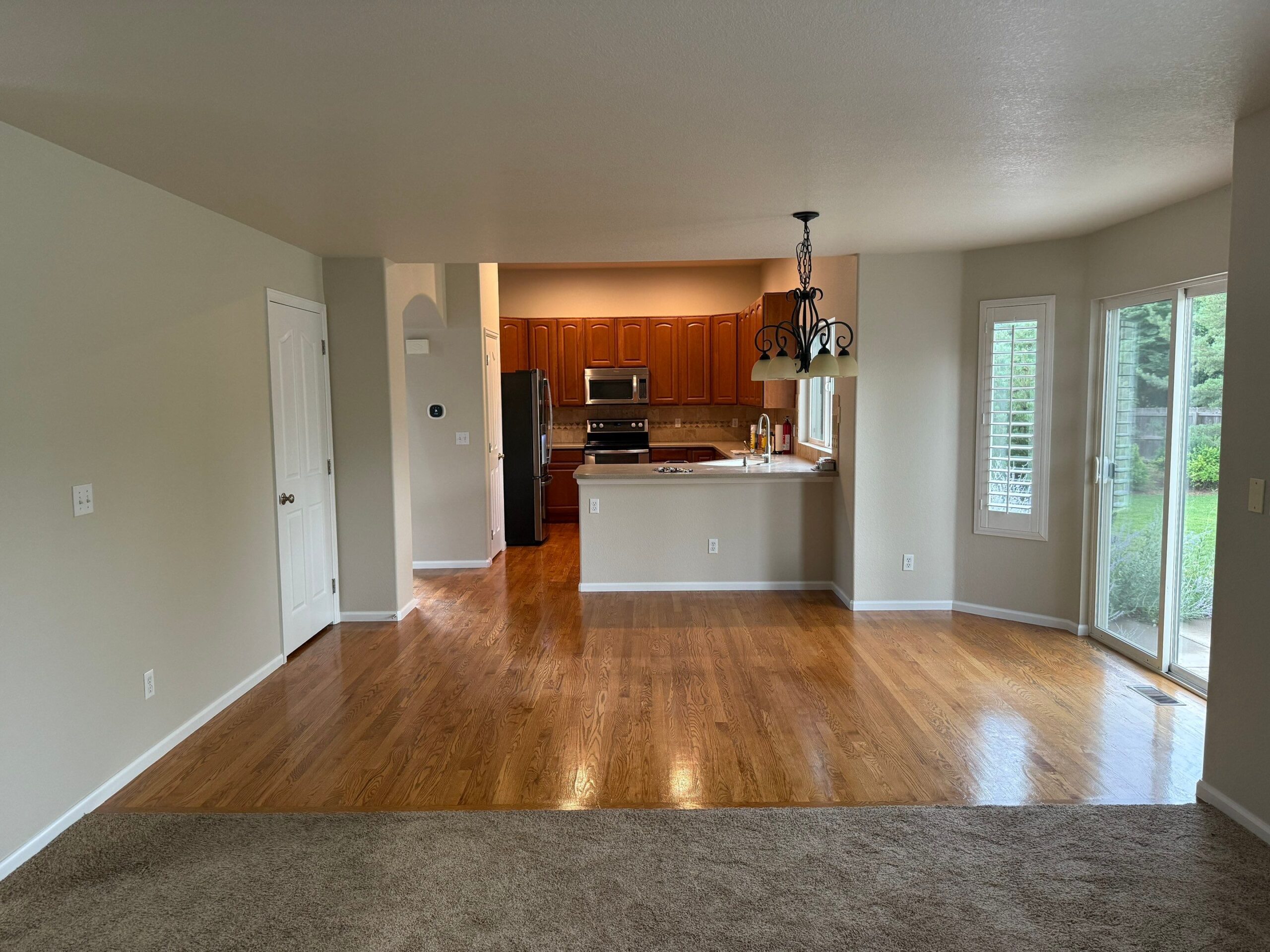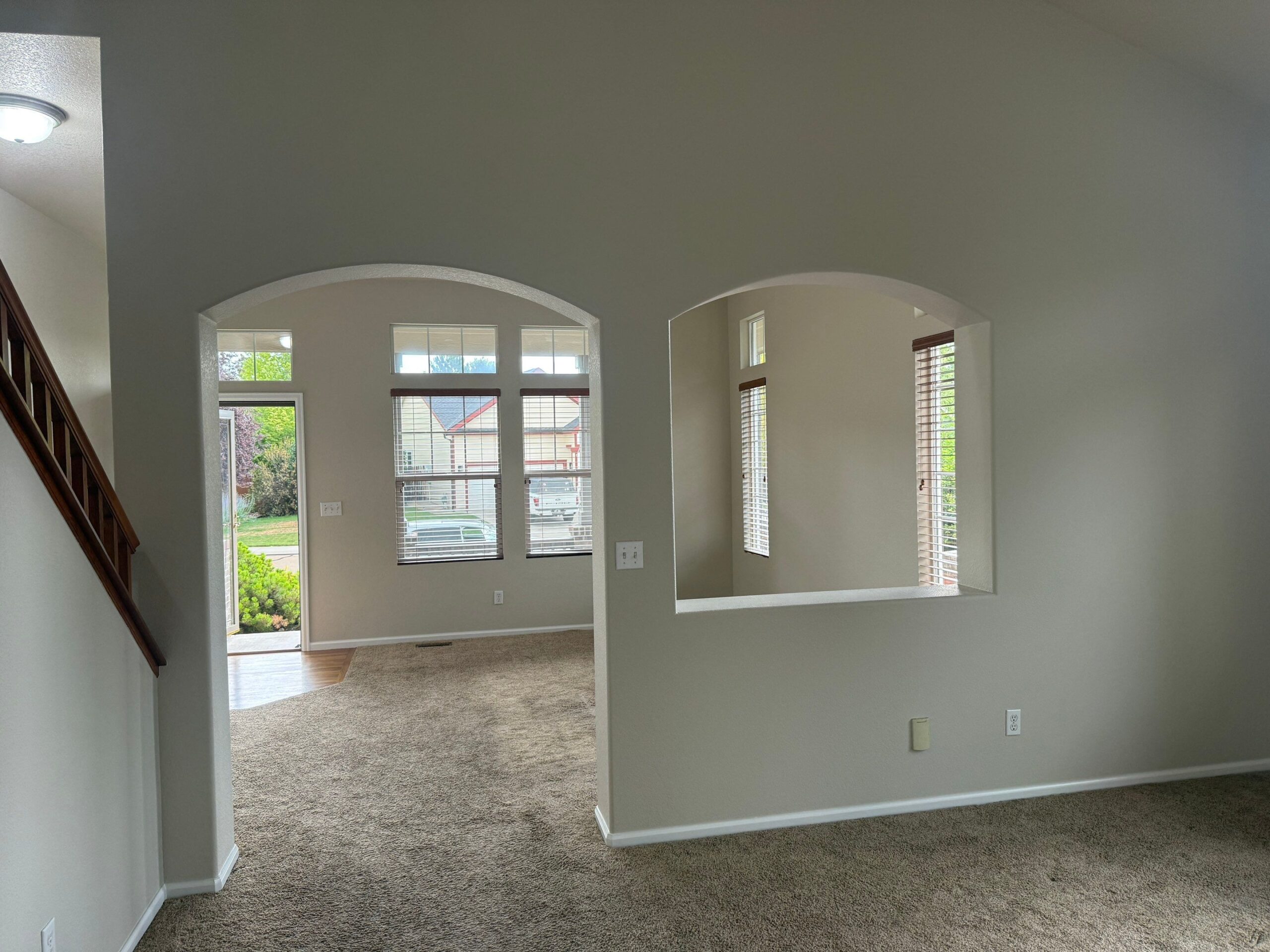Paint cracks are more than an eyesore. They’re an early warning sign that something—whether in the paint layer, the surface beneath, or the surrounding environment—has gone wrong.
While paint crack repair restores damaged walls, prevention is the smarter, long-term approach that stops the problem from happening in the first place.
If you’ve ever repainted a wall only to see cracks return months later, you already know the frustration (and expense) of fixing symptoms instead of causes. Understanding the difference between repair and prevention is the key to both protecting your walls and managing your maintenance budget.
This guide breaks down why cracks form, how to stop them before they start, the right way to repair them when they do, and which products and services deliver lasting results.
The Science Behind Paint Cracking: Why It Happens
A paint crack isn’t just “old paint giving up.” It’s the visible result of stress exceeding the paint film’s flexibility or adhesion strength.
Four main factors cause paint cracks:
-
Surface preparation issues – Dirt, grease, loose paint, or lack of primer weaken adhesion.
-
Environmental stress – Fluctuations in humidity, temperature, and sunlight degrade the paint film.
-
Substrate movement – Drywall, plaster, wood, or masonry expand and contract, stressing rigid paint.
-
Poor product quality – Low-binder paints and incompatible coatings fail faster.
Prevention tackles these root causes before paint is applied. Repair deals with the damage after it appears. Knowing which approach to use—and when—saves time and money.
Prevention: The Best Defense Against Paint Cracks
Preventing cracks is not complicated, but it demands diligence, product knowledge, and attention to detail. The goal is to create a paint system flexible enough to move with the substrate, yet strong enough to withstand everyday wear.
Proper Surface Preparation
-
Cleaning – Remove dust, grease, and contaminants with mild detergent or TSP substitute.
-
Sanding – Smooth rough patches and feather edges of existing paint.
-
Priming – Apply the right primer to seal porous areas and promote adhesion.
A quality primer acts as a stress buffer, reducing the risk of cracks even in high-movement areas.
Choosing Quality Paint Products
Premium acrylic latex paints outperform low-cost alternatives in flexibility, adhesion, and longevity.
For extra protection, elastomeric interior paints can stretch to bridge hairline cracks.
| Paint Type | Flexibility | Crack Resistance | Best Use |
|---|---|---|---|
| Acrylic Latex | High | Excellent | Most interior walls |
| Alkyd / Oil-Based | Low | Moderate | Trim, cabinets |
| Elastomeric Coatings | Very High | Outstanding | High-movement walls |
Environmental Controls
Paint in stable conditions:
-
Temperature: 50–85°F (10–29°C)
-
Humidity: 40–60%
Avoid painting near windows in direct sunlight or during seasonal humidity swings.
Professional Application Techniques
Certified painters follow manufacturer guidelines for mixing, thinning, drying times, and coat thickness. They also know how to sequence painting to prevent premature curing or trapped moisture—two major contributors to cracking.
Repair: Fixing Existing Paint Cracks

Once a paint crack appears, the damage is done. The repair process must address the underlying cause; otherwise, cracks will simply return.
Assessing the Damage
Not all cracks are the same. Hairline cracks may be cosmetic. Larger cracks can signal deeper substrate or moisture issues.
Professionals use:
-
Visual inspection
-
Moisture meters
-
Infrared thermography (for hidden leaks)
Surface Repair Techniques
-
Scrape away loose paint.
-
Sand edges to blend old and new paint.
-
Fill cracks with a flexible filler or patch compound.
-
Prime repaired area to seal and stabilize.
-
Repaint using a crack-resistant paint.
Product-Specific Solutions for Repair and Prevention
| Product Type | Purpose | Example Use Case |
|---|---|---|
| Acrylic Primer | Seals porous surfaces and improves adhesion | New drywall |
| Stain-Blocking Primer | Prevents discoloration from water stains | Ceiling repairs |
| Flexible Patch Compound | Fills and moves with substrate | Hairline wall cracks |
| Elastomeric Paint | Bridges minor cracks and resists future ones | High-humidity bathrooms |
Pro tip: Always match primer chemistry to topcoat type. Acrylic primers pair best with latex paints, while oil-based primers are suited for alkyd topcoats.
Service-Specific Approaches

Inspection and Diagnosis
A professional painter starts with a diagnostic inspection—checking for moisture intrusion, substrate condition, and prior coating compatibility.
Expert Surface Preparation and Painting
This may include:
-
Power sanding
-
Dust extraction systems
-
Industrial primers
-
Application in controlled temperature/humidity
Maintenance and Follow-Up
Many painting companies offer annual inspections to spot early signs of cracking, peeling, or fading. Preventative touch-ups cost far less than a full repaint.
Cost Comparison: Prevention vs. Repair
| Approach | Average Cost per Room | Longevity | Risk of Recurrence |
|---|---|---|---|
| Prevention (Pro service, premium products) | $400–$800 | 8–12 years | Low |
| DIY Repair (basic materials) | $50–$150 | 1–3 years | High |
| Professional Repair | $250–$500 | 3–7 years | Medium |
Spending more upfront on prevention often means skipping two or three full repaint cycles over the life of the home.
Common Mistakes to Avoid
-
Painting over damp surfaces
-
Using incompatible primer and paint types
-
Over-thinning paint for easier application
-
Ignoring manufacturer drying time guidelines
Conclusion
Paint cracks are avoidable. While repair restores appearance, prevention eliminates the problem before it starts.
By combining professional inspection, quality surface preparation, premium crack-resistant products, and controlled environmental application, homeowners can keep walls flawless for over a decade.
If you see early signs of cracking, act quickly—whether that means repairing or investing in preventive measures. The longer you wait, the bigger the job.


